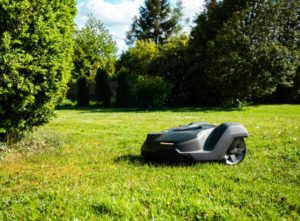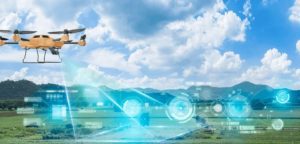Technology integration has transformed the ever-evolving landscape of commercial landscaping, reshaping outdoor spaces into dynamic and efficient environments. As we enter the New Year, business owners and landscaping professionals must stay abreast of the latest trends and cutting-edge technologies to redefine the commercial landscaping sector. In this blog post, we’ll explore emerging trends and showcase examples of how technology is becoming an integral part of commercial landscaping, offering insights into how these advancements can positively impact ventures in 2024.

Smart Irrigation Systems:
Water conservation is a key concern in landscaping, and smart irrigation systems are revolutionizing how businesses approach water management. These systems utilize sensors and weather data to optimize watering schedules, ensuring that plants receive the right amount of water at the right time. For instance, companies like Rachio and Rain Bird offer smart irrigation controllers that users can control remotely through mobile apps, allowing them to make real-time adjustments based on weather forecasts and soil moisture levels. This enhances the sustainability of landscaping practices and contributes to cost savings by reducing water wastage.

Robotic Lawn Maintenance:
Imagine a fleet of autonomous robots maintaining lawns with precision and efficiency. This futuristic vision is becoming a reality with the introduction of robotic lawnmowers. Brands like Husqvarna and Worx have developed robotic mowers equipped with sensors and GPS technology that enables them to navigate outdoor spaces, mow lawns, and even return to their charging stations autonomously. This technology enhances the productivity of landscaping professionals and minimizes the need for manual labour, reducing operational costs for businesses.

Augmented Reality (AR) in Landscape Design:
In addition to robotic advancements, integrating augmented reality in landscape design transforms how professionals conceptualize and present their ideas. AR tools like iScape and Landscapelab allow designers to use smartphones or tablets to overlay digital representations of plants, hardscapes, and other elements onto real-world spaces. Consequently, this lets clients visualize the final landscape design before any physical work begins, facilitating better communication between clients and landscapers. Furthermore, adopting AR technology enhances the design process and contributes to higher customer satisfaction and increased project success rates.

Drones for Site Surveys and Maintenance:
Moving on to another technological innovation, drones have found applications in various industries, and commercial landscaping is no exception. Drones equipped with high-resolution cameras and sensors can survey sites, providing detailed aerial views of landscapes. This data is invaluable for landscape architects and designers in planning and executing projects with precision. Additionally, drones can be employed for maintenance tasks such as inspecting hard-to-reach areas, monitoring plant health, and even spraying fertilizers or pesticides. This not only improves efficiency but also ensures the safety of personnel by minimizing the need for manual inspections in challenging terrains.

Sustainable Lighting Solutions:
Lastly, incorporating energy-efficient and sustainable lighting solutions is another trend gaining momentum in commercial landscaping. LED lighting, in particular, is widely adopted for its longevity and low energy consumption. Smart lighting systems, such as those offered by Philips Hue and Lutron, allow for programmable lighting schedules and colour customization, creating visually appealing landscapes while optimizing energy usage. These lighting innovations enhance the aesthetic appeal of outdoor spaces and contribute to environmental sustainability and cost savings.
As we enter the New Year, technology integration in commercial landscaping is poised to redefine the industry. In conclusion, smart irrigation systems, robotic lawn maintenance, augmented reality in landscape design, drones for site surveys, and sustainable lighting solutions are just a glimpse of the cutting-edge technologies shaping the future of outdoor spaces. Consequently, business owners and landscaping professionals who embrace these advancements stand to gain both efficiency and cost savings and deliver innovative and sustainable solutions to their clients. By staying informed and incorporating these technologies into their ventures, stakeholders in the commercial landscaping sector can ensure that they are at the forefront of a tech-infused terrain, ready to meet the challenges and opportunities that the New Year brings.